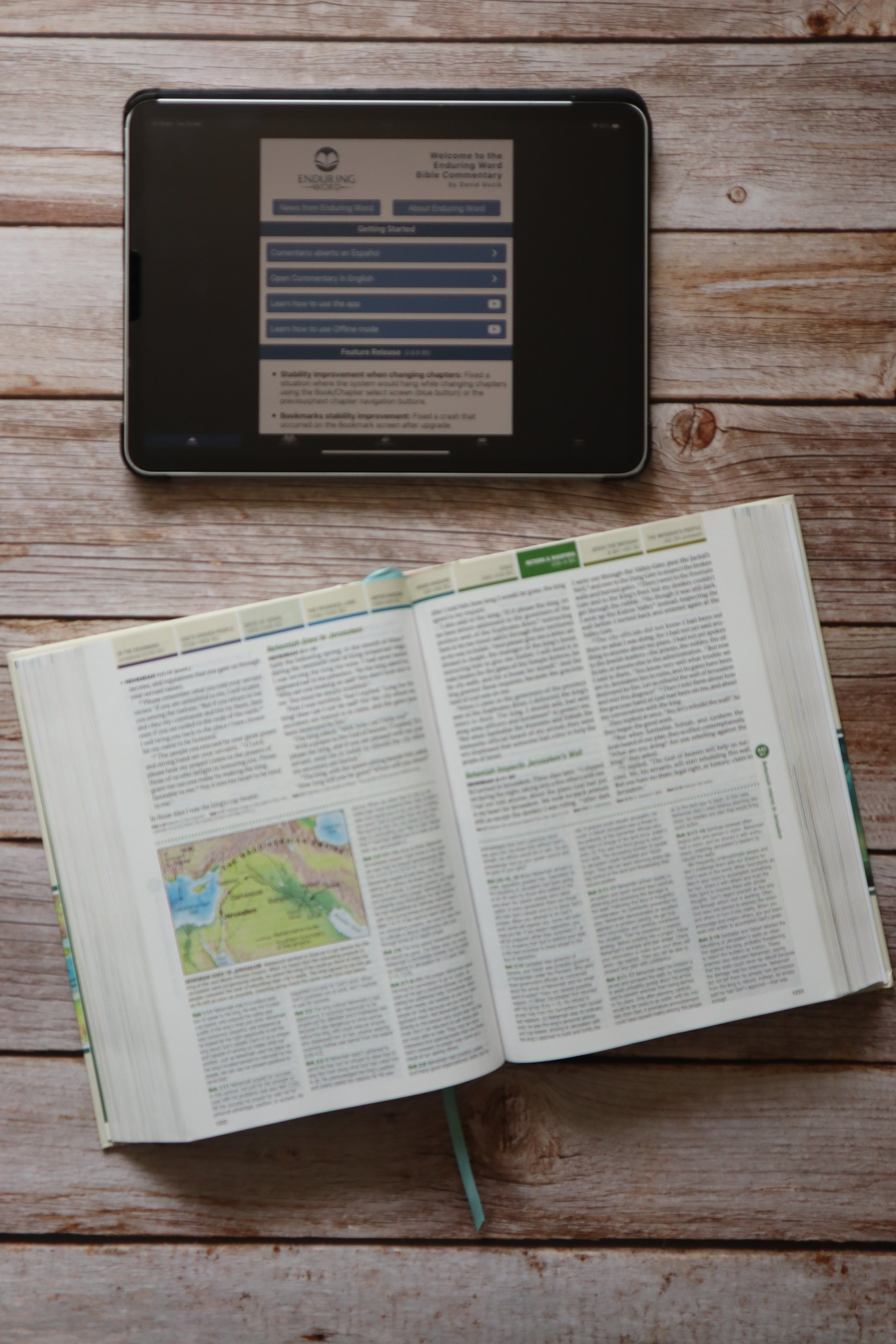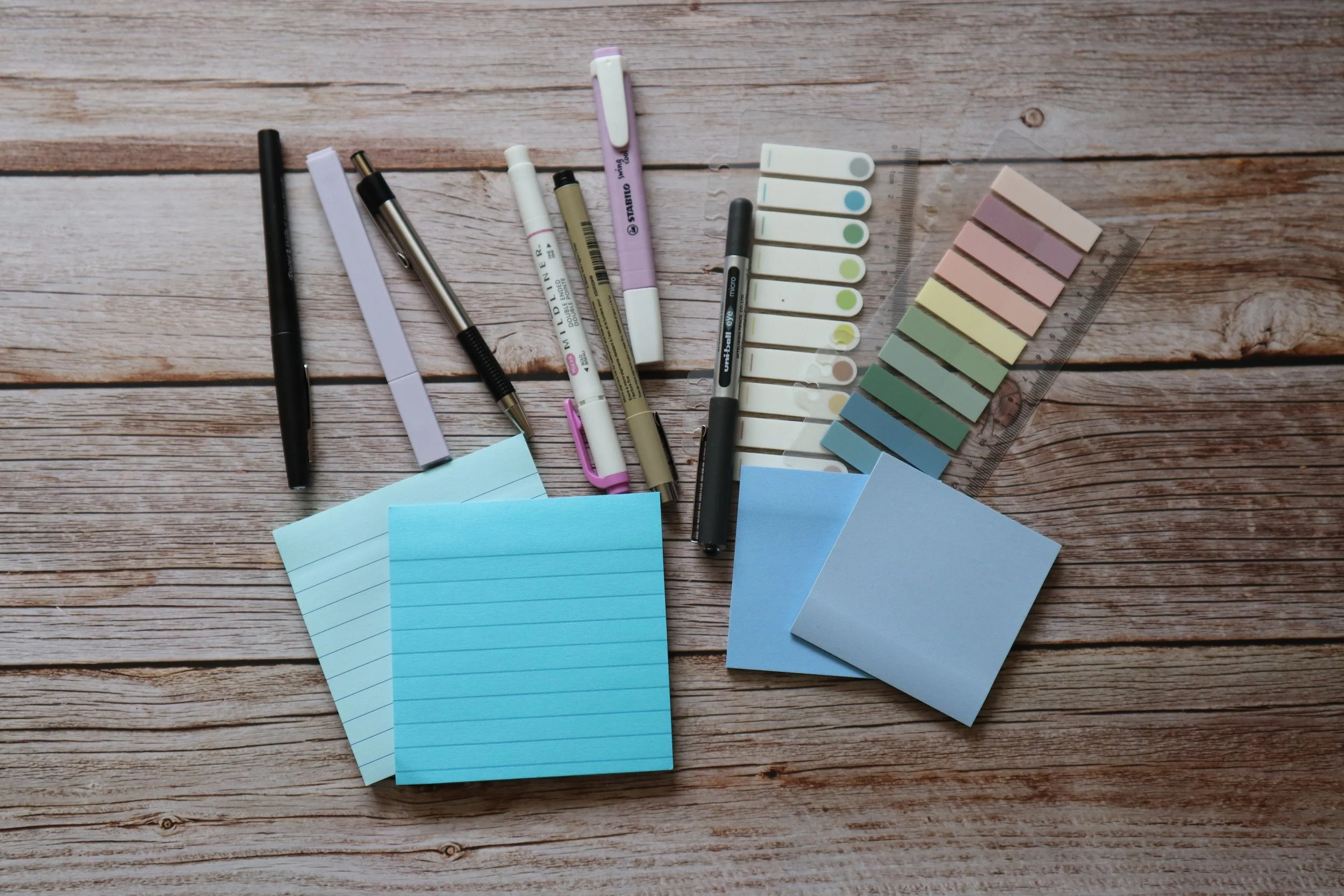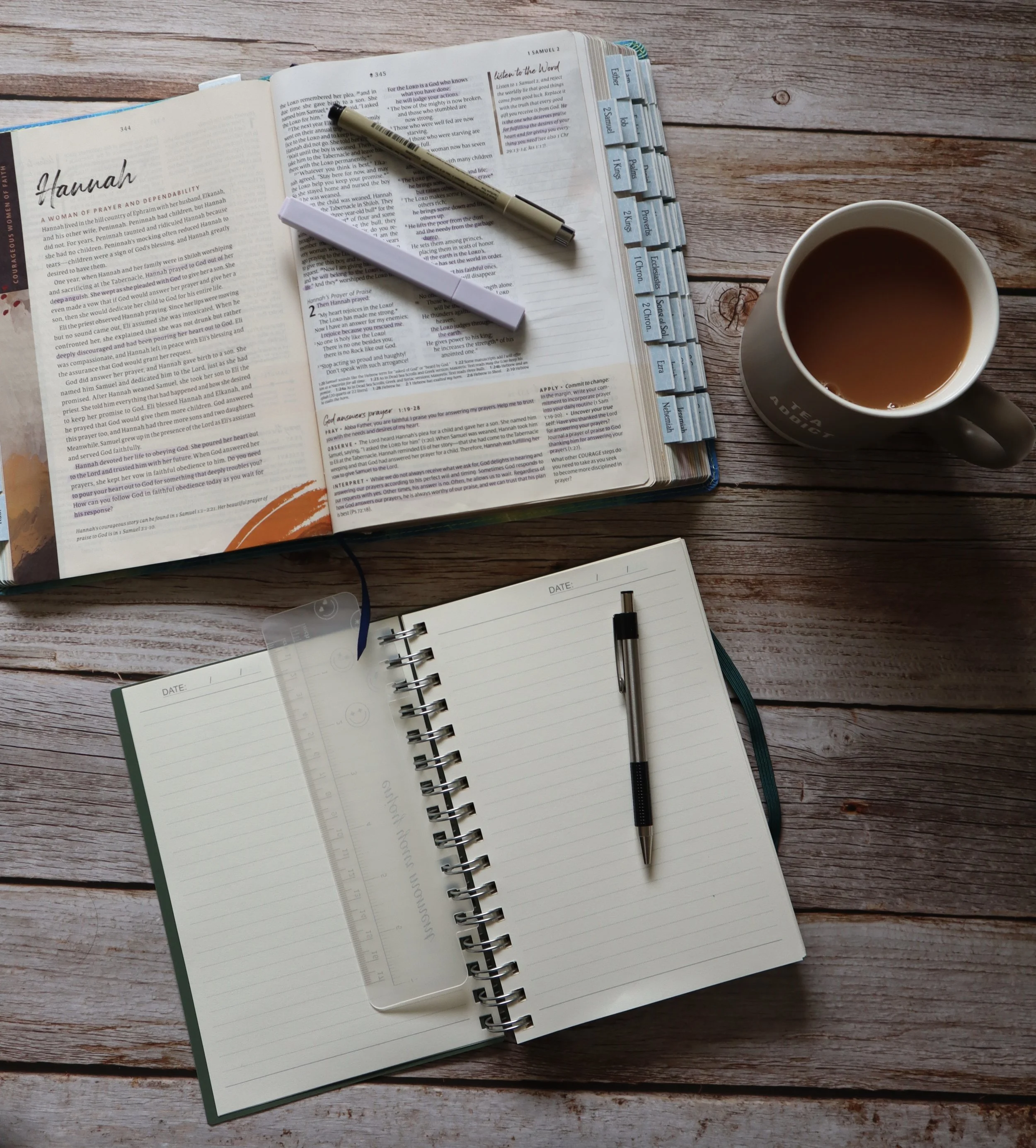Navigating the Pages: Tips and Tricks for New Bible Readers
How I Began to Read the Bible Daily
Introduction:
Embarking on the journey of reading the Bible for the first time can be both exciting and overwhelming. With its rich history, diverse genres, and profound teachings, the Bible is a treasure trove waiting to be explored. If you're a new Bible reader, fear not! This blog post is your guide to navigating the pages with confidence and deriving maximum benefit from your reading experience. If you’ve read the bible before or parts of it and wish to get back into the practice of spending time in God’s word, I hope that you will find some useful tips in this blog post.
Don’t expect to be able to stick to a daily reading plan straight away. Any new habit takes time to form and incorporate into your day. The easiest way to add a new habit is to attach it to one that you already have. I’ve journaled for many years, so it was ideal for me to add my bible reading to this established habit. Initially, I tried it after I had journaled, but I soon found myself getting distracted with my phone instead of reading the Bible, and then before I knew it, it was time to leave for work. And another day had gone past with me not reading the Bible.
When is the best time for you to read your bible?
I bought this Bible second-hand off Amazon a few years ago after seeing Ashley Hetherington using a copy. I was drawn to it because it has the whole bible broken down into 365 readings, one for each day, unless it’s a leap year. It has a section of the Old Testament, the New Testament, some of Psalms, and then Proverbs.
This gives a good overview to a new Bible reader, and I found it also helped me to get into the daily habit of reading and studying it. Tyndale and other publishers have similar ones, as this one now looks to be out of print.
I’ve found the morning is the best time for me, as when bedtime rolls around, I’m far too tired to concentrate. When I began to incorporate my bible into my quiet time, I would start by journaling and then reading the bible. But I found I was running out of time to read and study the Bible, so I would either rush it or just not get around to it.
So, I switched things up to start with my Bible reading and study and then journal. This way, it means I can journal about what came up for me in God’s Word, as well as any other thoughts that I need to get out of my head. This has worked out very well for me.
Is there somewhere in your home you would be able to read your Bible, like your favourite chair, or is the kitchen table easier for you? I used to read on the sofa, but I prefer to read my bible at the kitchen table. Then, I take my bible and my journal to the sofa to have a more relaxed part of my morning quiet time routine.
All habits evolve from time to time; that’s okay. I regularly look at my habits and routines and see how I can change things to become more efficient or just to switch things up from doing things the same way all the time. Sometimes, change can be a good thing.
Start with the Right Translation:
Choose a Bible translation that suits your reading style and comprehension level. Versions like NIV (New International Version), ESV (English Standard Version), or NLT (New Living Translation) are often recommended for beginners due to their readability. Different translations are sometimes worded slightly differently, so it can be useful to read a verse or chapter in a few different translations to help you understand what is happening or being said. I prefer the NIV predominantly, or the NLT, but I also sometimes check other translations as well. The NIV and NLT are all very similar translations, so I’m looking at maybe getting a different translation to compare what I’m reading.
The Bible was originally written in Hebrew, Greek and Aramaic, so translating it into modern English is a challenge. Some translations are word-for-word ones, and others are thought-for-thought, so the thought-for-thought ones can be a little easier to read. But it’s important to find one that you understand and are comfortable reading. An easy way to find a translation you enjoy reading and can understand is to use the Bible app, YouVersion and switch between different translations of what you’re reading.
There is a useful article I found by The Bible Project on the topic of different translations that might help you understand the different ones a bit more.
Bible Gateway has a similar article which includes an infographic of the different translations. Just doing a bit of research and watching a few videos about the different translations out there has made me confused! I knew that the NIV and NLT were very similar, but I also thought the ESV was as well, and according to Bible Gateway, it’s more word-for-word. My church uses NIV most of the time, and my favourite daily devotional podcast uses NLT. That’s why I use them so much.
Now what?
Okay, so you’ve picked a translation. So, now what? When I first started to read the Bible in 2019, I found it very daunting because it’s such an imposing book. There are so many stories about amazing people and seemingly impossible feats, and I didn’t know where to start. I automatically began at the front because that’s how we read a normal book in the Western world, but Genesis is a lot of information for a new believer to take in.
After a bit of research, thank you to Google, I discovered that the Gospels were the best place to start as a newbie. John and Matthew are good introductions to Jesus, and they can be followed by Mark and Luke. The Psalms are very inspirational for someone who is reading the bible for the first time or coming back to it after a break. A lot of the Psalms are prayers that we can pray over ourselves or others when needed.
What else do you need?
I have a few pens, including highlighters and some Post-it notes. You may find you are being drawn to a word or phrase within the passage you’re reading. I highlight, underline, and also add notes to my bible. I’m still learning it, so I will make a note of anything that is at the end of a section. For example, any information that helps me to understand the text.
Set a Reading Plan:
- Establish a realistic reading plan to avoid feeling overwhelmed. Whether it's a chapter a day or a specific book per week, having a plan will keep you on track.
Understand the Context:
- Before delving into a passage, take a moment to understand its historical and cultural context. This will enhance your comprehension and appreciation of the verses.
Use Study Bibles and Commentaries:
- Invest in a good study Bible or consult reputable commentaries to gain insights into the meanings of verses, historical context, and theological explanations.
Take Notes and Journal:
Keep a notebook or journal to jot down your reflections, questions, and favourite verses. This will personalise your reading experience and provide a record of your spiritual journey.
Other tools you may find useful:
- Things like a range of pens, highlighters, as well as Post-it notes, depending on your stationery preferences. You may try a few different ones out in the front of your bible to see which ones you like, but also which ones don’t bleed through the thin Bible pages.
Explore Bible Apps and Online Resources:
- Leverage technology by using Bible apps and online resources. Many apps offer daily readings, devotions, and study tools to enhance your understanding.
Join a Bible Study Group:
- Connect with a local or online Bible study group. Sharing perspectives with others can deepen your understanding and provide a sense of community.
Pray for Understanding:
- Before starting your reading session, take a moment to pray for understanding and wisdom. Invite the Holy Spirit to guide your thoughts and illuminate the Scriptures.
Focus on Quality Over Quantity:
- It's not about how fast you can finish but how deeply you can understand. Focus on quality over quantity, taking the time to reflect on the meaning of each passage.
Explore Different Genres:
- The Bible includes various genres, including poetry, history, prophecy, and letters. Explore them all to gain a well-rounded understanding of God's Word.
Conclusion:
Embarking on the journey of reading the Bible is a transformative experience. By implementing these tips and tricks, you'll find yourself navigating the pages with increased confidence, gaining a deeper understanding of the Scriptures, and growing spiritually along the way. May your journey be filled with revelations, insights, and the joy of encountering God's Word.
Ready to dive into God's Word with confidence? Whether you're new to Bible reading or returning after a break, these tips can help you build a consistent and meaningful habit. Start your journey today and explore the Scriptures in a way that speaks to you!
If you’re a seasoned Bible reader, comment below your favourite translation to study.




